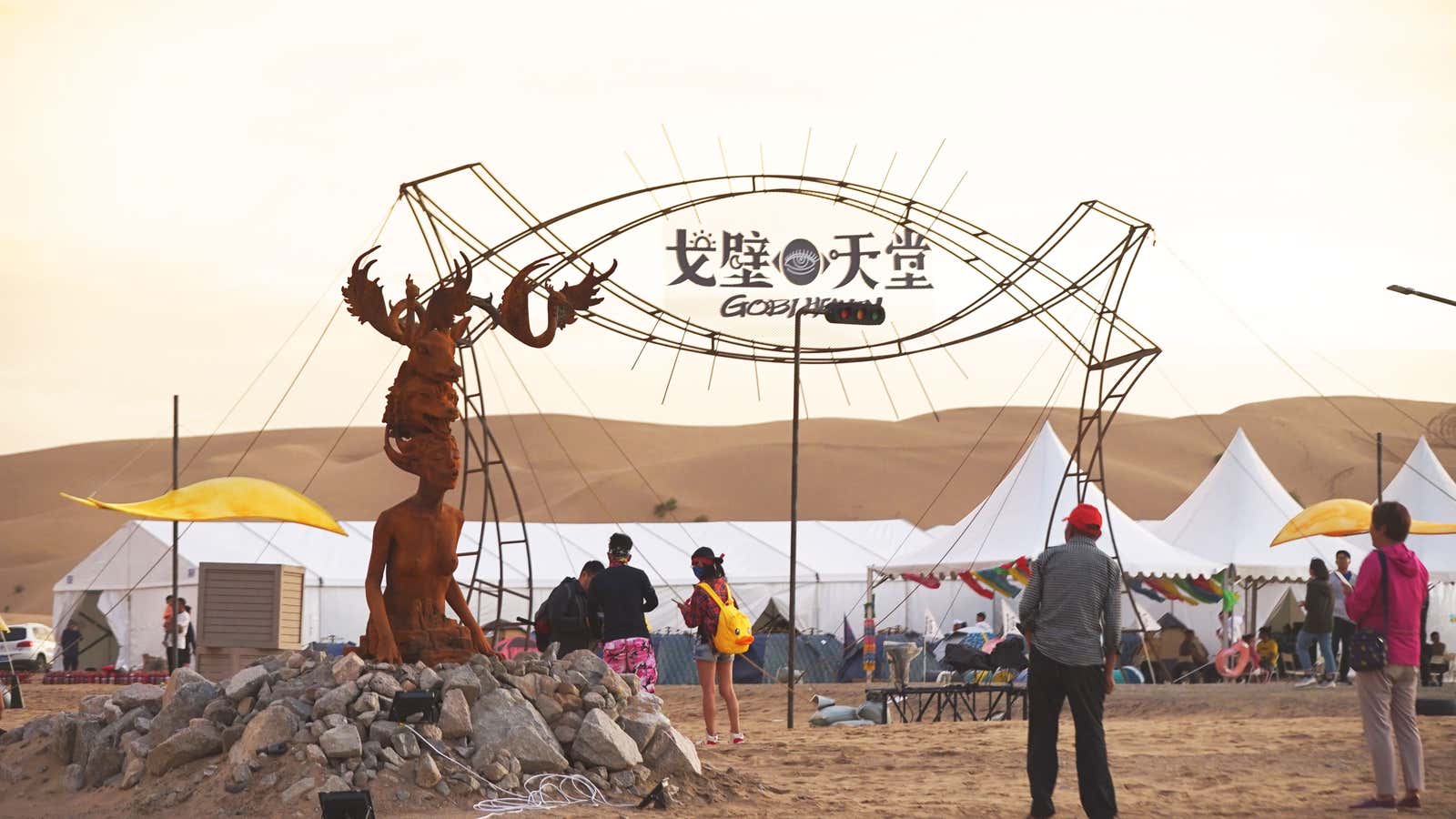In the weeks before the annual Burning Man festival sets up camp in the Nevada desert, a Chinese version of it played out in Inner Mongolia.
For the price of a nine-hour drive from Beijing—and 560 to 2800 yuan ($80-400) for a ticket—revelers gathered in a wide-open Gobi desert space the size of six soccer fields, about one-tenth the size of Burning Man’s Black Rock City, which will be assembled starting Aug. 25. Gobi Heaven organizers say about 6,000 to 8,000 “residents” stayed the entire five days of the festival, though some participants and event volunteers interviewed by Quartz offered lower estimates on the size of the crowd.
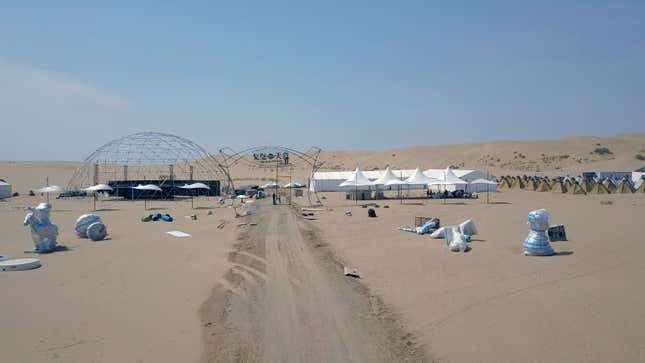
Festival goers endured five days of extreme, windy weather: Heat in the mid-90sF° during the day followed by temperatures dropping into the low 50s at night. A sandstorm blew apart many tents one afternoon. Another day, everyone got soaked in pouring rain.
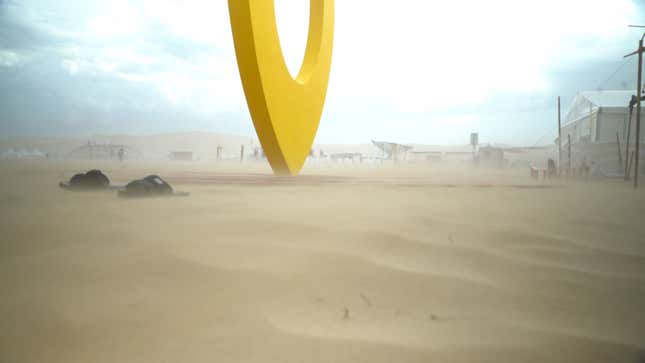
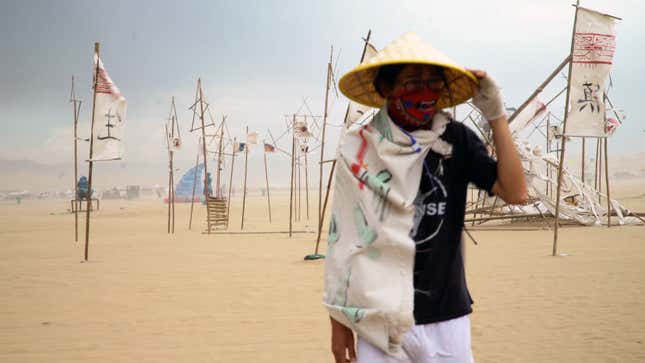
Chinese and international artists presented music, fireworks, light and art installations amid campsites that also showcased artwork. In the same spirit as burning the Temple on the last night of Burning Man, festival goers dressed up and burnt a bamboo-structured center installation called “The Guardian of Life and Death.”
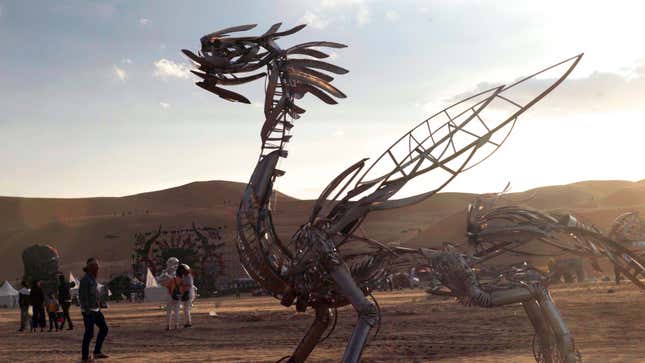
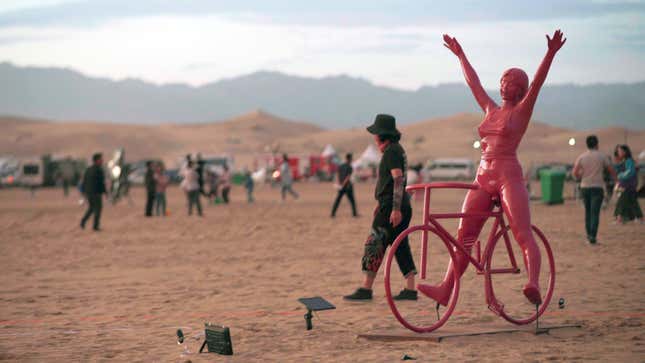
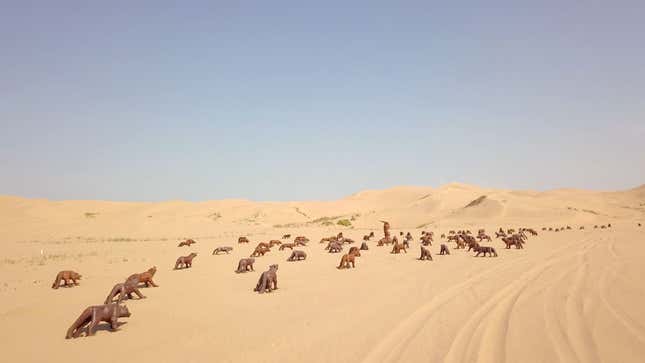
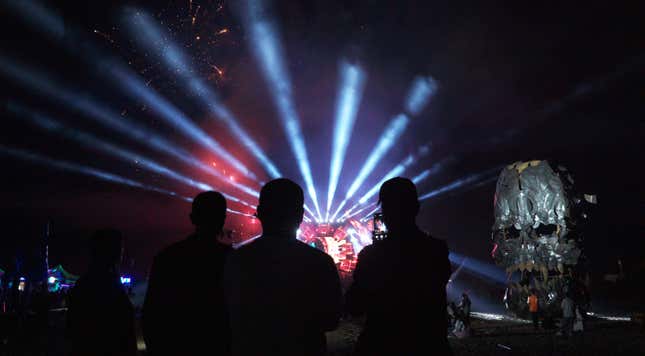
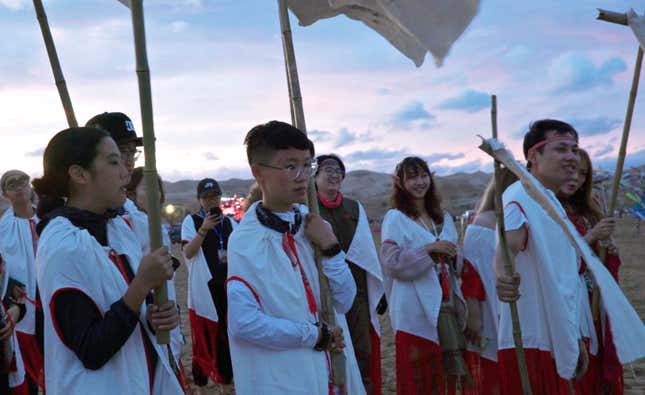
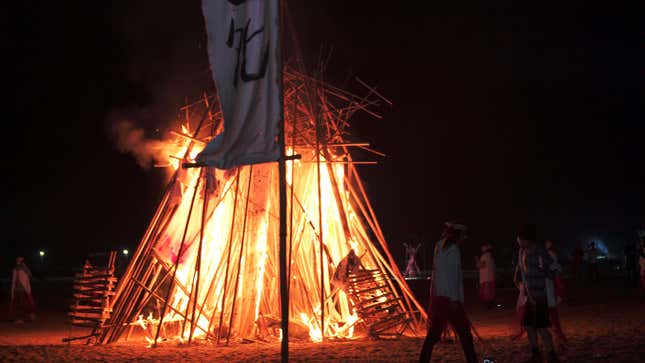
Getting into Gobi Heaven
Gobi Heaven founder Le Chen had prepared two years for the festival. He had worked in creative advertising in Beijing for almost two decades and wanted to create a Chinese version of the countercultural American festival. Looking to strike a business partnership, he visited the San Francisco-based nonprofit Burning Man Project, attended the festival last year, and established a company. Backed by the state-run China Cultural Media Group (link in Chinese) and private capital, it now has a total of more than 50 million yuan ($7 million) to run the project in China for five years.
The Chinese version isn’t called Burning Man. “The Burning Man trademark extension was denied by [China’s] Trademark Office. They saw Burning Man as an unconventional American carnival and thought it didn’t align well with the ethics and morals of China,” Chen told Quartz.
A Burning Man regional volunteer who was involved with Chen’s early efforts to broker a partnership said the Chinese event has no commercial or legal affiliation at all with the Burning Man Project: “His commercial orientation and advertising-driven approach was incompatible with Burning Man’s event culture.” The Chinese festival thus got its own name, Gobi Heaven.
In adapting the 10 Principles of Burning Man, Chen developed his own “10 principles” (link in Chinese) for Gobi Heaven, encouraging human interaction and an open mind. There’s no mention of the “radical self-reliance” and “radical self-expression” as endorsed by Burning Man in the US.
Here’s how the principles compare:
Single-day tickets were sold at much-discounted prices, around 80-280 yuan ($11-40). Chen said that drew in single-day spectators from nearby communities, giving them rare direct exposure to modern artwork.
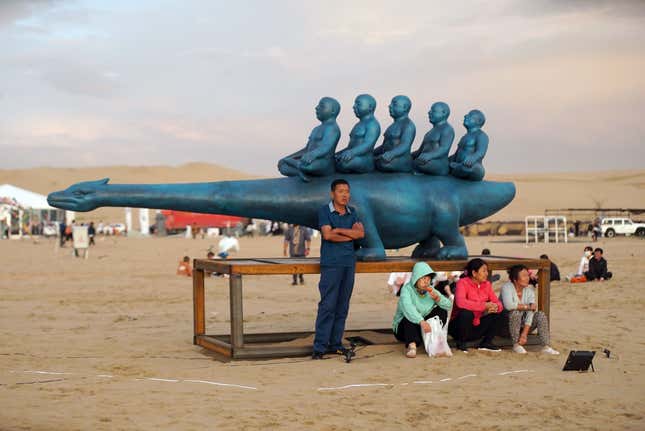
Burning up the rules
Chen planned to limit cellular service on the site to one in every three hours, just eight hours a day, to simulate an isolated environment. He abandoned that plan on the first day. “I needed to call the workers responsible for equipment and food supplies. Campers couldn’t pick up their friends, performers couldn’t coordinate, and the emergency line was blocked,” Chen said.
Some festival goers didn’t bring their own tents or water. They were able to buy supplies from local merchants who came to the event entrance. Pre-cooked food delivery such as braised beef noodles and large chicken plates was not allowed initially, but Chen changed that rule, too. “Some camps wanted to host a meal for a friend gathering. Some wanted to make dumplings. As long as they had a good time, we would allow it,” he said.
Now, Chen said, he wants to separate Gobi Heaven from any Burning Man hype. “Not all human activities happening in a desert setting with fire should be called Burning Man,” he said as the event concluded its last day. “What we’ve built here is culture.”
Update: This article now includes comment from a Burning Man regional volunteer on the absence of any relationship between the US desert festival and Gobi Heaven.
